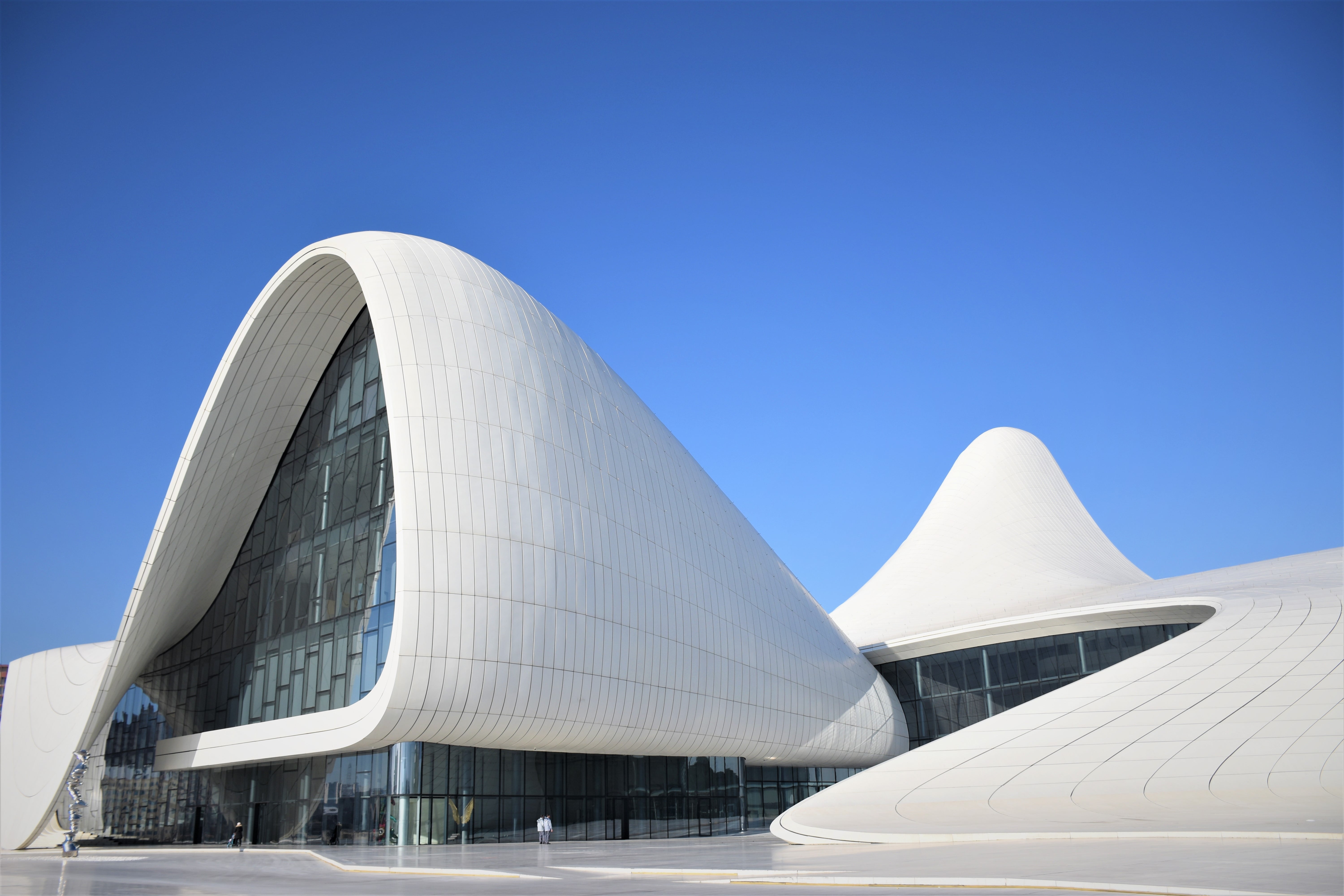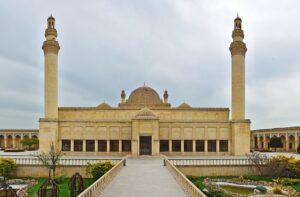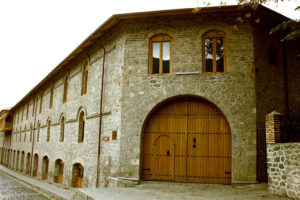8 DAYS/7 NIGHTS in AZERBAIJAN
You’ll be following in the footsteps of ancient travellers and merchants on this scenic route along the southern slopes of the Caucasus Mountains.




| Destination |
BAKU-SHEKI |
| Depature |
|
| Departure Time |
According to the request |
| Return Time |
According to the request |
| Included |
|
| Excluded |
|
 Travel With “According to the request” |
Details
Start and Finish in Baku
Upon arrival at Baku Airport, you will be met by the private driver and transferred to the Hotel for overnight.
• This morning we will explore the old center of the city of Baku which is enclosed by medieval walls resembling a citadel. On that account, in a local language, the area
was named “Inner City."
• Within the citadel, we will emphasize 15 th -century Shirvansahs Palace and Maiden
Tower, as both sites were included in UNESCO's World Heritage List.
• Shirvansah Palace is one of the magnificent edifices of medieval Azerbaijan, which served as an executive and residential mansion for the Muslim dynasty of the kings of Shirvan. The ensemble displays the superiority of “Baku-Shirvan” architecture which is known for sandstone reliefs.
• Maiden Tower is the oldest landmark of Baku surrounded by a quaint plaza and many carpets and handcrafts shops. The original function of the tower is speculated as being a Zoroastrian Temple, defense fortress, and observatory; thus it could be called the "Tower of Riddles." You will have an opportunity to enjoy the spectacular panoramic view of the old town from the rooftop of the Tower.
Then we will take a pleasant walk in Fountain Square, the heart of modern and fancy Baku. A pedestrian square and Nizami Street (former “Torgovaya”) are meeting points
for friends, families, couples, business partners, and many more. Fountain Square is a place where lights are never turned off and masses of people, street musicians, dancers, and others mix in a huge crowd wandering around the countless number of shops, pubs, bars, and restaurants.
This afternoon we will visit the National Museum of History of Azerbaijan, the largest and one of the most intriguing museums in the country. The exhibition is set in the former house of an oil magnate and philanthropist Haji Zeynalabdin Taghiyev, who lived in the late 19 th and early 20 th century. The exhibition includes various pearls of Azerbaijan’s rich history and culture
• Transfer to Hotel. Overnight in Baku city
Today we will travel towards the south to see the rare
Mud Volcanoes and Stone Age Gobustan rock engravings.
After a one-hour journey, we will drive on a gravel road to approach the volcano hill. Azerbaijan has the most significant number of mud volcanoes in the world, concentrated mainly in the eastern part of the country. They mainly consist of marsh gas, but also other hydrocarbons and ineffective gases.
• After an exclusive tour of mud volcanoes, we will proceed to Gobustan State Reserve to see the interactive and cutting-edge indoor museum and sandstone caves and ancient petroglyphs. First engravings were chiseled over 17,000 years ago in the Stone Age and drawings were added until medieval times. The engravings in Gobustan are plentiful with many themes; people, hunting and ceremonial scenes, worshipers, tribal dancing, animals, etc.
• After exploring this historic site, we will journey back to Baku to visit the outstanding Museum of Carpet and Applied Art which was opened to visitors in 2014, and built in the shape of a rolled carpet under the direction of Austrian architect Franz Janz. In 2010, UNESCO proclaimed the Azerbaijani carpets as a Masterpiece of Intangible Heritage. The broad range of Azerbaijani carpets from medieval times to the 21st century is demonstrated in the museum. By geographical position, peculiarities of patterns, composition, color solution, and technical features, Azerbaijani carpets are conditionally divided into seven carpet-making schools: Guba, Baku or Absheron, Shirvan, Ganja, Gazakh, Karabakh, and Tabriz. The museum superbly displays the carpets of each school in a slightly curved shape which embellishes its splendor.
• We will end the day with a driving tour of Night photos of the Baku Olympic stadium/gymnastics stadium /Heydar Aliyev Center/Supreme Court/Government House/Maiden Tower/Flame Towers/Flag Square/Crystal Hall/martyrs hall
• Transfer to Hotel. Overnight in Baku.
We will be touring in the Absheron peninsula which stretches to the Caspian Sea from the semi-desert mainland. The sites we will visit are linked to the old religions, superstitious beliefs, and backgrounds of the medieval lifestyle of old inhabitants of the area.
Ateshgah is a fire temple, which sprang up in the 17th -18th century at a place where the permanent fire burned. Throughout the 18th -century prayer room, monastic cells and caravanserais were built. Many foreign travelers and historians have described this castle-like place during their visits. It is one of the sacred places Zoroastrians (fire worshippers) used to visit and still do during their pilgrimage.
Then we will proceed to Mardakan village to see one of the oldest rectangular defense fortresses built in the 12th century. Here in Mardakan village, once upon a time, the locals could use this tower not only for defense and observation but
also to escape through a secret underground tunnel which in the old days connected the village with its outskirts.
Our last stop in the peninsula will be in Muhammady village to visit the flaming mountain – Yanardagh. It is a unique geological site where natural gas escaping from the ground burns continuously. This natural phenomenon was formed by marsh-gas condensate which comes to the surface under intense pressure. It is never extinguished, neither in snow nor in rain.
After enjoying the Absheron tour we will proceed to Haydar Aliyev Center which
houses many permanent and temporary art galleries and museums. The overall shape of the building resembles a wave-like ascension from the ground towards
the sky followed by gradual descent down to the earth. This is not only a tribute to post-modern architecture but also a portrayal of an eternal cycle.
Transfer to Hotel. Overnight in Baku.
After check out depart for the city of Sheki towards the north-west. On this drive, you can witness the dramatic landscape diversity of the country from semi-arid lowlands to lush highlands. Our first stop will be in Maraza town, known for its 15th -century grave mausoleum of Diri Baba, the venerable
dervish master. The two-stored sandstone building was built as a facade of the cave that unifies with its surroundings. Since the medieval ages, the site has been an important pilgrimage spot for local people.
Our next stop will be in Shamakhi City, the old capital of Shirvan state known for its carpets, silk, and wine. In the 15th century, the city played an essential role in the international silk trade. Shirvan silk, which was known under the
name of Talaman silk, was exported to some Asian and European countries. For centuries, Shamakhy, the center of Shirvan, has been repeatedly destroyed by strong earthquakes. Although it is located in the most seismic-hazardous area
of the Caucasus, the city was restored all the time.
We will visit the grand mosque of the city called Juma Mosque. The mosque, which is located in the center of the ancient city at the entrance to the district, has a non-standard structure. The mosque with four minarets resembles
medieval European universities. The Friday mosque which has survived to date was built on the foundations of the ancient mosque, based on a project by the architect Zivarbay Ahmadbayov in 1902.
The most anticipated outing of the day is the Sheki Khans Palace, the 18th-century summer administrative palace. The interior decoration of the palace
was done by local craftsmen and reflects the best traditions of Azerbaijani architecture. Considered the most beautiful architectural monument of medieval Azerbaijan, the Palace of Sheki Khans is genuinely unique. Thousands
of pieces of small glass make up its colorful mosaic. Not a single nail or glue
was used to bind them together.
Next, to the ornamentally miraculous palace, there is a Shebeke Workshop of craftsmen who make this work of art live and this is where subtle ornamental patterns appear. Shebeke is a field of decorative applied arts requiring great skill. The basement of patterns consists of geometrical ornaments, mostly circular, multi-angular, and star-shaped forms.
After enjoying the great art of Shebeke we will head to Upper Caravanserai, one of the two surviving old hotels in Sheki from the 18th century. The inside is very comfortable and is intended to favor the conclusion of significant deals. The
Upper Caravansary is used as a hotel now. The dome over its entrance is one of the biggest in the Near East. All merchandise was stored in the cellar, and the shop proper would be on the first floor while the living premises were on the second.
Transfer to Hotel. Overnight in Sheki.
After checking out from the hotel we will visit Kish Church, one of the Caucasian Albania monuments included on the UNESCO World Heritage list. Attributed to the 1st-5th centuries, the temple in the Kish village was one of the first churches in the Caucasus.
• Leaving behind Sheki, we will depart for Baku city. On the way to Baku, we will stop in Lahij village, which is located on a slope of the Great Caucasus Ridge, on the left bank of Girdimanchay 1,100-1,200 meters above sea level. Lahij has been the center of copper smithing in Azerbaijan since the 18th and 19th centuries. Copper jugs, vases, cauldrons, and samovars made by Lahij master craftsmen we renowned in the Caucasus. You will have an opportunity to interact with local people and artisans as well as to observe their working process.
• Transfer to hotel. Overnight in Baku
The tour starts with a view of Baku city, its harbor, boulevard zone, andthe Caspian Sea from Martyr’s Lane. Martyr’s Lane is a memorial parklocated on one of the highest hills of the city and is composed of a tomb standing on an 8-pointed star crown of the gold-framed glass dome.
• Then we will pay a visit to Villa Petrolea or Nobel Villa (as mentioned by some) a museum dedicated to the Nobel Brothers and their significant role in the development of Azerbaijan’s oil industry in the late 19th and early 20th centuries. This mansion, built in 1882 by the Nobel brothers’ Petroleum Production Company (Branobel) will take you back to the past, to feel the glorious years of Azerbaijan’s first oil boom. The villa was built by the famous Swedish architect Lindvall in the Byzantine style, using local limestone and wood. The renovated Villa Petrollea and its museum contain many artifacts, heirlooms, and artworks by famous masters, such as Faberge, Valentin Serov, and others.
•Then we will walk at Baku promenade, as called a boulevard by locals. The Boulevard is a broad and shady pedestrian walkway, running along the edge
of the Caspian Sea downtown. At its center, just across busy Neftchilar Avenue, a huge Stalinist-inspired office building is located, which is the house of the government of Azerbaijan. Along the canals, there are rides and other
amusements – outdoor cafes and restaurants, a long jetty, a chess pavilion, and billiard tables. a
• Transfer to Hotel. Overnight in Baku
After check-out, you will be met by the local driver and transferred to Baku International Airport.

![]()



Write Your Review